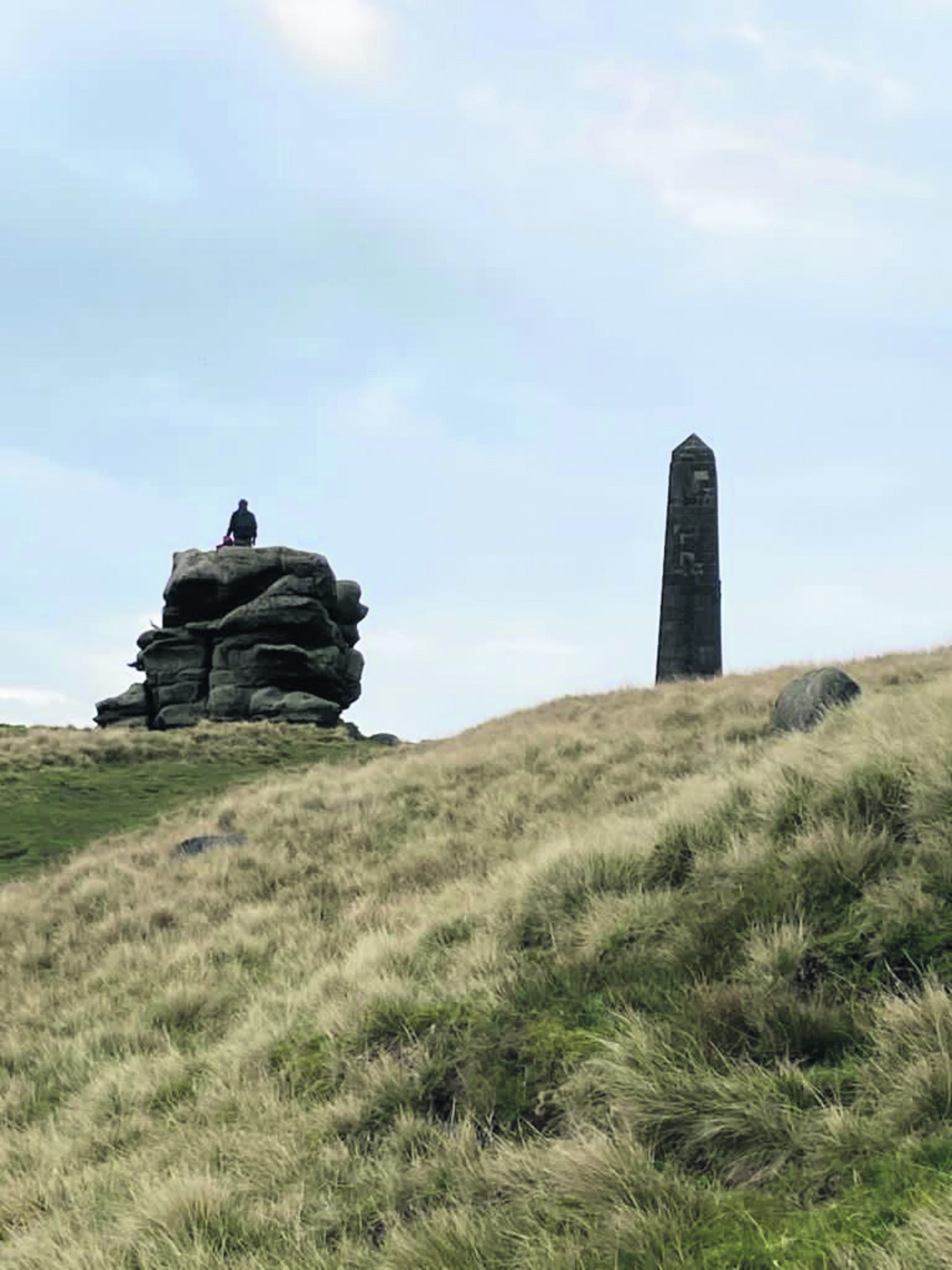By John Kirkbride
The old days
Like the rest of the villages that make up the Saddleworth area, Greenfield is not without its history. The Roman road from Glossop to the Roman fort at Castleshaw passed through the village, crossing Chew Brook at Packhorse Bridge. And it doesn’t get much more historical than that.
In truth, after the Romans had decamped to try and rescue their empire, not a great deal happened in terms of development in the area we now know as Greenfield. There were some early farm dwellings on the hillside but not a lot else until the woollen industry began to gather pace.
More dwellings were built as the demand for hand loom weavers grew and it wasn’t long before the mills began to appear. Naturally, where there were factories there needed to be houses for the workers, and the expansion of Greenfield began in earnest.
One of the earliest and best known of these mills was Greenfield woollen mill, built in around 1780. Between 1820 and the 1860s a row of terraced houses was built not far from the mill, which eventually numbered 40 back-to-back dwellings. Though most have now been knocked through to create larger homes, the property is still there and known locally as Forty Row.

The woollen mill became a paper mill in 1921 when it was acquired by Robert Fletcher & Son. For many years the mill provided employment for hundreds of local people until it ran into financial difficulties and ceased production overnight in 2001. By all accounts the interior looks pretty much the way it did on the day it closed. (For anyone interested there are photos online: abandonedyorkshire.com).
Several pubs, a band club and a prominent Conservative Club have served the people of Greenfield for many years now, though sadly the Con Club is no longer pulling pints. It closed its doors in 2017 and has been turned into five luxury houses. The good news is that much of the building – including the iconic facade – has been incorporated into the development.
As it happens, a joint birthday party for myself and my eldest son was the last event to be held there before they switched off the pumps the following day.

Greenfield Station opened on August 1, 1849 – the same day the section of line between Huddersfield and Stalybridge opened. Villagers can I suppose take some pride in the fact that Greenfield is now the only working railway station in the whole of the Metropolitan Borough of Oldham.
Landmarks (past and present)
Having looked down on the villages of Saddleworth for almost 100 years, Pots and Pans is probably one of the area’s best known landmarks.
This impressive obelisk made its appearance in 1923 as a memorial to the 259 Saddleworth people who lost their lives in World War I.
 It takes its name from the nearby Pots and Pans rock, with its curious basins and hollows, which every child who has ever been up there will have climbed (not to mention most adults).
It takes its name from the nearby Pots and Pans rock, with its curious basins and hollows, which every child who has ever been up there will have climbed (not to mention most adults).
Legend has it that the rocky landscape of the hills above Greenfield and Uppermill are the remains of an epic battle between two Saddleworth giants, Alphin and Alder, who lived across from each other on Aldermans Hill and Alphin Pike.
They fought over the attentions of Rimon, a beautiful water nymph who lived in Chew Brook, hurling rocks and boulders at each other from their respective hills. Alphin eventually lost and the heartbroken Rimon threw herself to her death in the valley below. Why do these stories never have a happy ending?
The attractive reservoirs above Greenfield have gained considerable popularity with walkers and weekend visitors to the area in recent years. Completed in 1967, Dovestone Reservoir is a favourite destination on a sunny day, no doubt partly because it’s the nearest you can get to something resembling a beach in landlocked Saddleworth. (Please note, it’s not Dovestone Lido and swimming in the reservoir is definitely not allowed).
There were strong objections from ramblers, climbers, campers and various associations when the scheme was first announced in the 60s. In the end a clause had to introduced into the Bill to ensure that certain amenities would still be available. The reservoir can hold 1075 million gallons of water, up to a depth of 103 feet.

Sadly, one of that area’s most striking buildings has been lost. Ashway Gap House was a shooting lodge constructed in the style of a Highland castle, which sat at the base of Dove Stone Clough.
It was built in the 1850s for John Platt, one of the siblings who ran the Platt Brothers textile firm, and it was impressive. I know this because I saw it on a number of occasions when it was still standing.
During World War I it was used as a military hospital and a number of Italian POWs were billeted there during the 1940s. Standing largely unused and semi-derelict after that, there was talk of restoring the building and doing something meaningful with it. But in 1981 it was demolished.

Last time I visited, about the only thing left were the steps up to the front door.
Modern Greenfield
Greenfield in the 21st century (when not under pandemic restrictions!) is a thriving village, with some attractive new housing and a variety of retail outlets.
It’s a place where you can do your weekly shop, watch live music, take a leisurely stroll or dine out on great food, to name but a few activities. You can even catch a train here, which is more than you can say for the rest of the Oldham area.
When it was announced that Greenfield’s derelict Knoll Mill was to be demolished to make way for a new Tesco store there was much ado locally. Understandably, smaller retailers were worried about the potential effect on their trade while many residents felt the building would be out of place in a rural village.
But since it opened in December 2010 (yes, it’s been there 10 years) it appears to have enjoyed pretty steady footfall. Love it or hate it, we seem to have got used to it – and it isn’t half handy if you need a bottle of plonk and some loo roll late on a Saturday night.
The old Micklehurst Loop Line has become an attractive tree-lined bridle path and I can tell you from experience that its autumnal beauty was unaffected by last year’s lockdown restrictions. It’s also a very pleasant way to get to one of the various Greenfield establishments currently serving excellent food.
In short, Greenfield continues to evolve, as do all of Saddleworth’s villages. Some would call it progress, though there’s no doubt others would disagree. Whatever your views, this evolution is set to continue – and I think there’s a lot to be said for embracing it.



You forgot to mention about the Viking ring found in 1914 in Chew Brook now submerged under Dovestones Reservoir. Now on display in the British Museum.
The viking ring was fpund at Nutbottom which is still there. Its where the old farm was at the old wooden bridge which you can still walk over.
My Aunty still lives in Upper mill, but my late dad grew up in Oldham, and the hills were his playground. He spoke often of Chew Valley, Pots and Pans and a narrow tunnel in the hills he and his dad used to go down, now locked I think. When lockdown finishes, I need to spread his ashes, as he requested, on Boar Flats. Any good routes to get there would be gratefully received. Xxxx
My Grandfather was Manager of Greenfield Waterworks. The Family lived at Binn Green House. My Dad often spoke about Ashway Gap House and we had a picture.
I cannot believe that you have failed to mention Saddleworth Rangers in your history of Greenfield.
My Dad lived in Greenfield, and his parents before him. Sadly he passed away in November, but was well known as Magic George. He set up the Barn Howlers ukulele club with another George, they used to meet at Cross Keys in the barn on a Sunday. Apparently he saved someone’s life on Indians Head in his younger days.
My grandad had the chippy built on greenbridge Lane known locally as chippy bill
Very interesting to read your info about ‘ Bonny Grenfeldt’ ( Greenfield).
I was born in Chew Valley Road . (My maternal grandfather was a Butterworth and my granny a Sykes from Mossley.)
My mother’s brother worked at Clayton Aniline in Greenfield in the 1960s. They were exporting felt for piano keyboards to Japan.
I have returned especially for the Whit Friday band contest when we hope for dry weather and somewhere to park a car!
I can recommend the film ‘Peterloo’ about the Peterloo Massacre (anniversary in 2019) which gives a vivid picture of the widespread struggles after Waterloo and the defeat of Napoleon for a living and democracy of the textile area around Manchester.